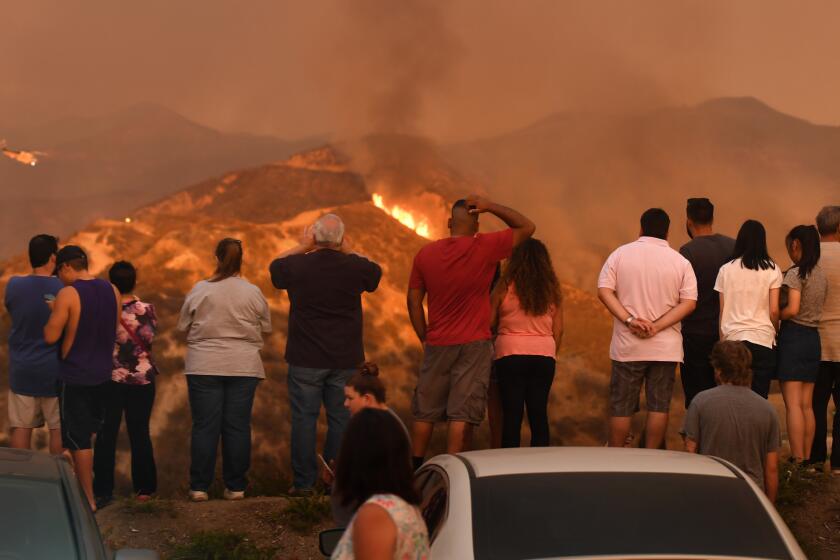In 2019, homelessness truly felt like a crisis in every corner of L.A.
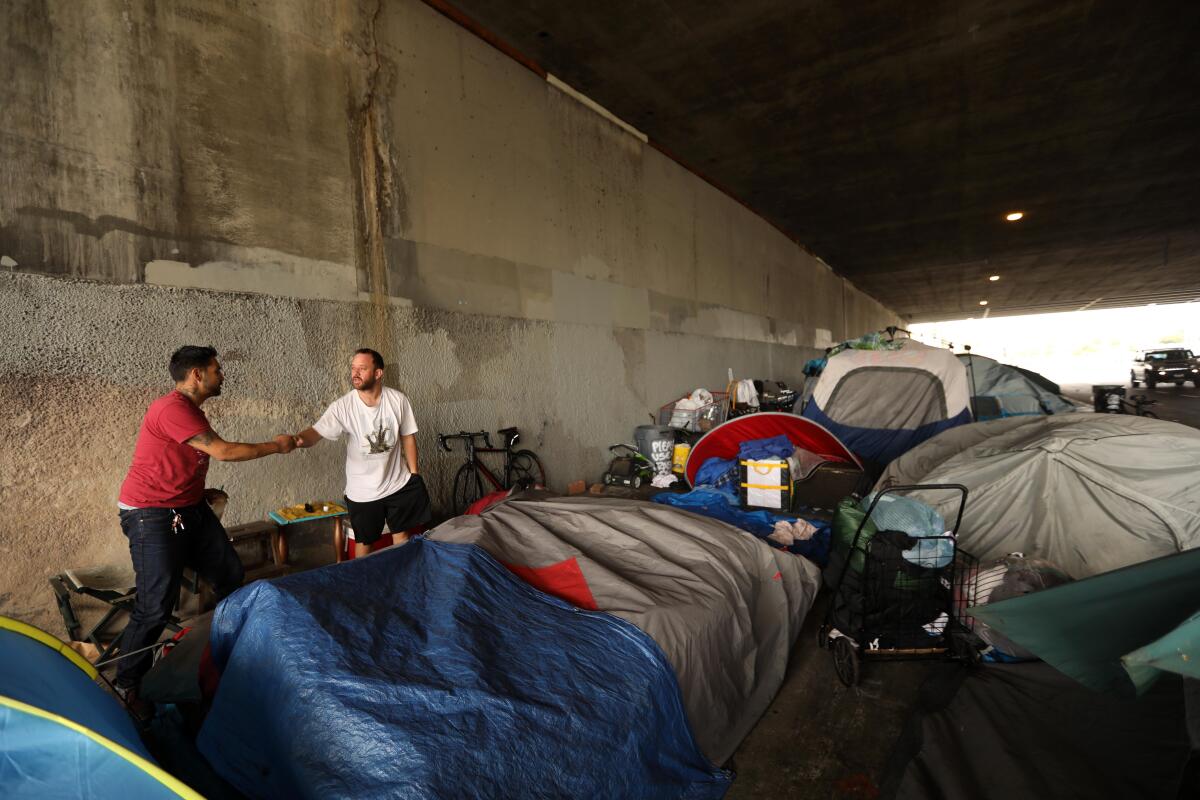
Homeless people have long been a part of the landscape of Los Angeles. In skid row. In Hollywood. More recently, in Venice.
But this was the year that the tents, tarps and broken-down RVs, and the unseemly sights, sounds and smells of people living on the streets became inescapable, no matter where you lived or worked. This was the year that homelessness truly felt like a crisis in L.A.
At last count, close to 59,000 people — roughly the population of Cupertino, Calif. — lacked permanent housing across L.A. County. That’s up 12% from last year. Meanwhile, in the city of L.A., the number climbed 16% to more than 36,000.
Most live outside and, according to a recent Times analysis, are deteriorating fast, with more people than previously reported afflicted by addiction, mental illness and physical disabilities.
We’re at the point that homeless people, sick and traumatized from spending their lives on the streets, are dying in record numbers. This year, it’s about 1,000.
“It’s all over L.A.,” said Justine Marine, a student who participated in a focus group related to a recent Times poll of public opinion on homelessness. “You can be in a good neighborhood, and it could be right around the corner.”
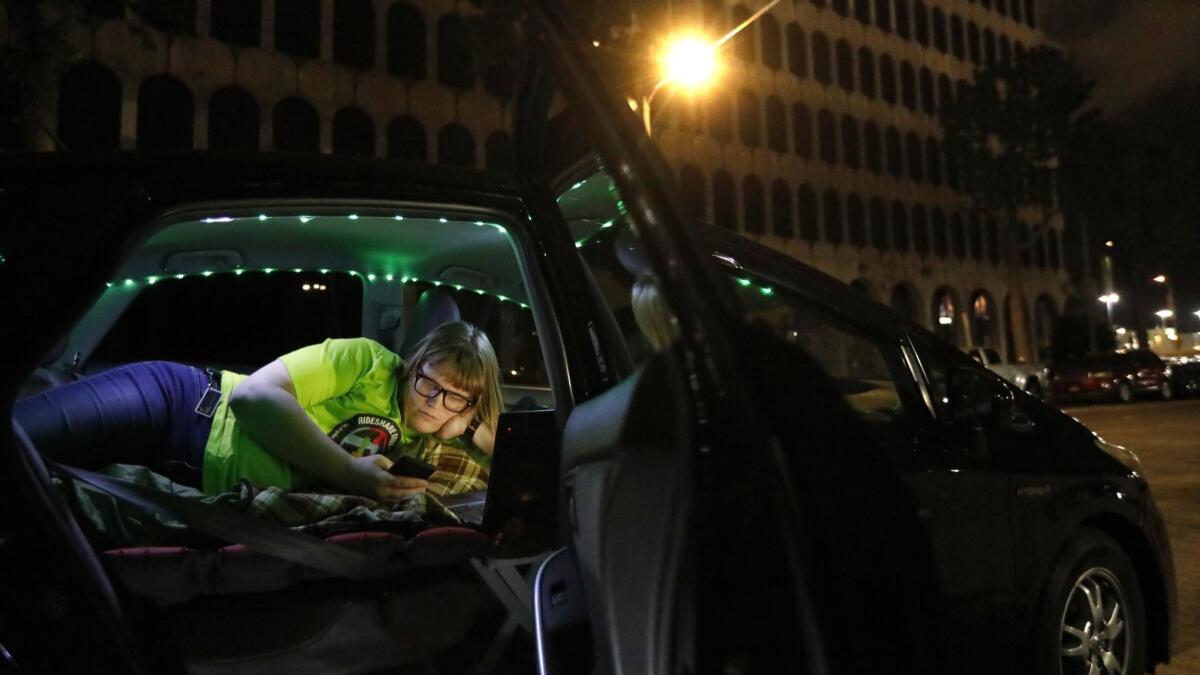
The question is, what now? What now for a city that President Trump says is “destroying” itself with homelessness and all that most of us can do is agree?
Because this is not how 2019 was supposed to go. This — or so I was told when I took the helm of editing most housing and homelessness coverage for The Times — was supposed to be the year of solutions.
Voters had agreed to spend hundreds of millions of dollars on more services, shelters and housing. Yet, for many reasons, not all of them the fault of local government, the first housing units to be funded by a $1.2-billion city bond measure won’t open until next month — the latest in a long string of delays.
Affordable housing is in such short supply and, therefore, so expensive — the result of state policy and the NIMBYism it has enabled — that about 150 people become homeless in L.A. County every day. That eclipses the 130 homeless people who get into housing every day.
“We definitely know what works and how to move people out of homelessness,” said Stephanie Klasky-Gamer, president and chief executive of LA Family Housing, a developer and provider of homeless services. “But we are fighting forces we have no control of, relative to what often causes people to become homeless.”
So, if no one here has control, where does that leave us in 2020?
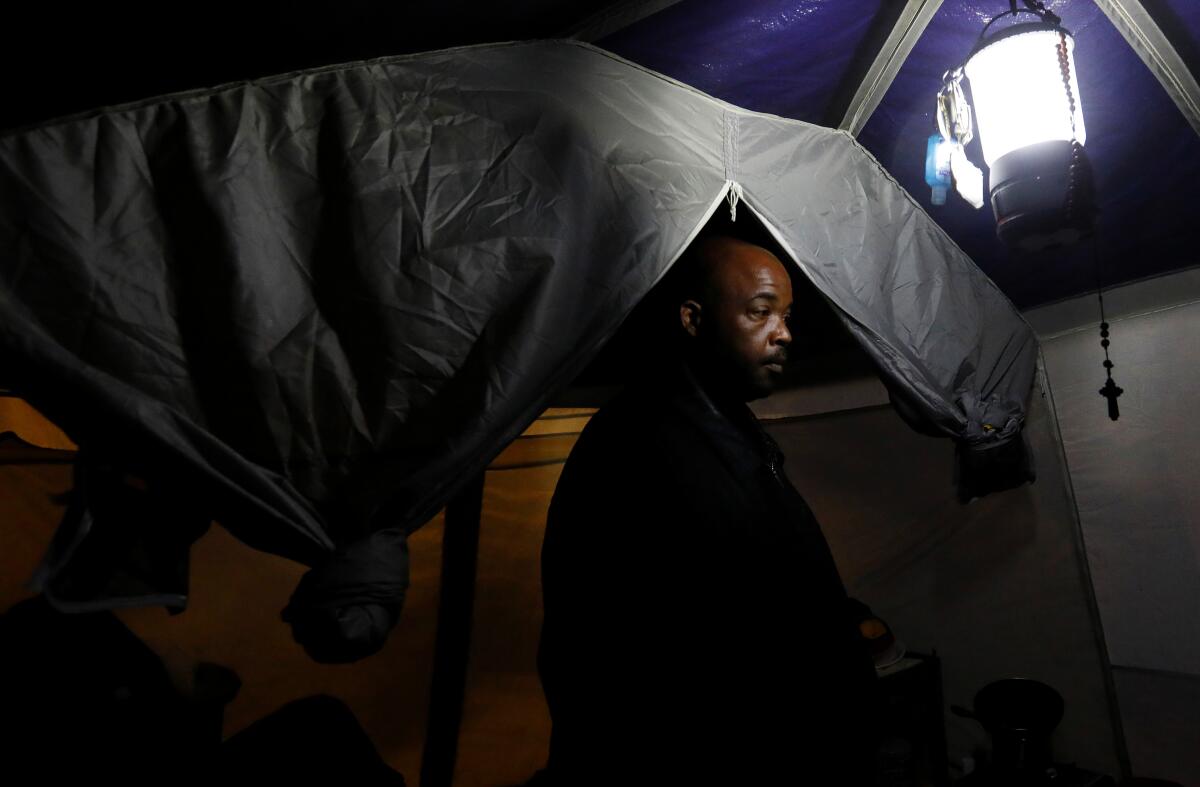
For one, expect more hand-wringing over what role law enforcement can or even should play in addressing homelessness, as anger starts to overshadow compassion in too many neighborhoods. A recent poll conducted for The Times and the Los Angeles Business Council Institute found that voters want police to intervene more often, although a string of legal settlements and court decisions have made that all but impossible.
For example, just this month, the U.S. Supreme Court declined to hear a challenge to the landmark case City of Boise vs. Martin, in which the 9th U.S. Circuit Court of Appeals ruled that it’s unconstitutional to arrest or otherwise punish people for sleeping on public property when adequate shelter isn’t available.
That means, unless there is dramatic uptick in shelter construction, the status quo of burgeoning sidewalk encampments is likely to be the norm for a while — something most Angelenos would probably agree isn’t a sustainable solution to homelessness.
This year, good news was overshadowed by a government shutdown, impeachment debates, mass shootings and cheating scandals.
So expect a debate over what Sacramento Mayor Darrell Steinberg and L.A. County Supervisor Mark Ridley-Thomas, co-chairs of the governor’s task force on homelessness, call “a right to shelter” or a “right to housing.” Their plan, which is still vague at this point but could become a 2020 statewide ballot measure, would force local governments to provide enough beds for every homeless person in the state to come indoors.
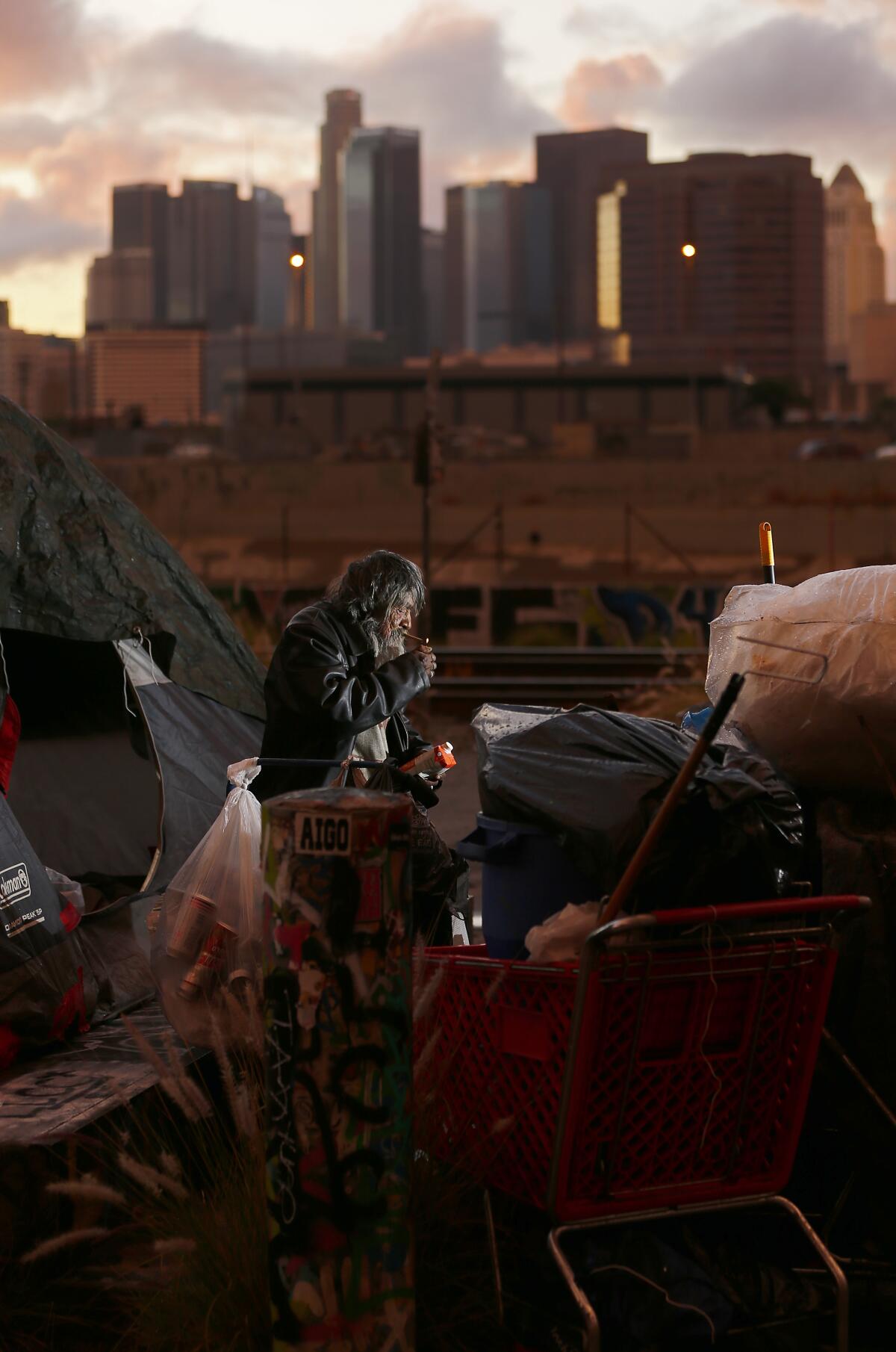
Finding the political will to build shelters across California is one thing. Finding a way to force homeless people to use those shelters, as Steinberg wants to do, will be quite another. Still, it’s a discussion worth having, as people continue to waste away on our streets.
Year in Review
More from our look back on 2019
The 19 stories our readers engaged with most this year
My year of covering the Trump White House
Abortion laws, immigration and other issues that defined the nation
Also come January, a new statewide law capping rent increases could begin to reduce the number of Angelenos who are becoming homeless in the first place. If New York, which recently enacted its own new rent control law, is any indication, evictions could decline in a big way in L.A. According to a Wall Street Journal analysis, new cases against renters who fell behind on rent in New York City dropped by more than 45%.
More homeless housing projects are set to open next year as well. So, maybe supply and demand for housing will begin to even out. Maybe the homeless population will begin to plateau. Or maybe 2020 will finally be the real year of solutions in Los Angeles.
Maybe. Because it certainly wasn’t 2019.
More to Read
Sign up for Essential California
The most important California stories and recommendations in your inbox every morning.
You may occasionally receive promotional content from the Los Angeles Times.
